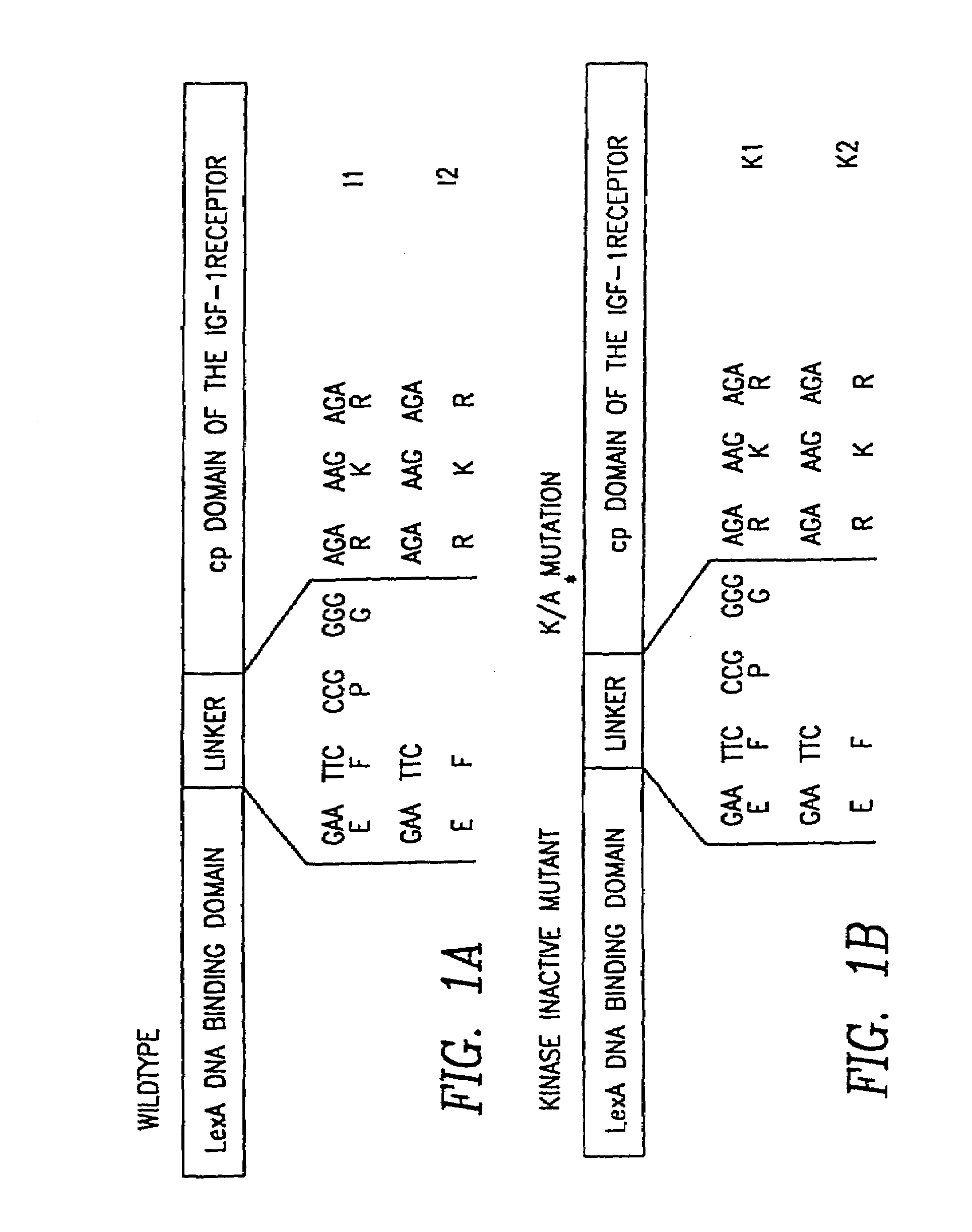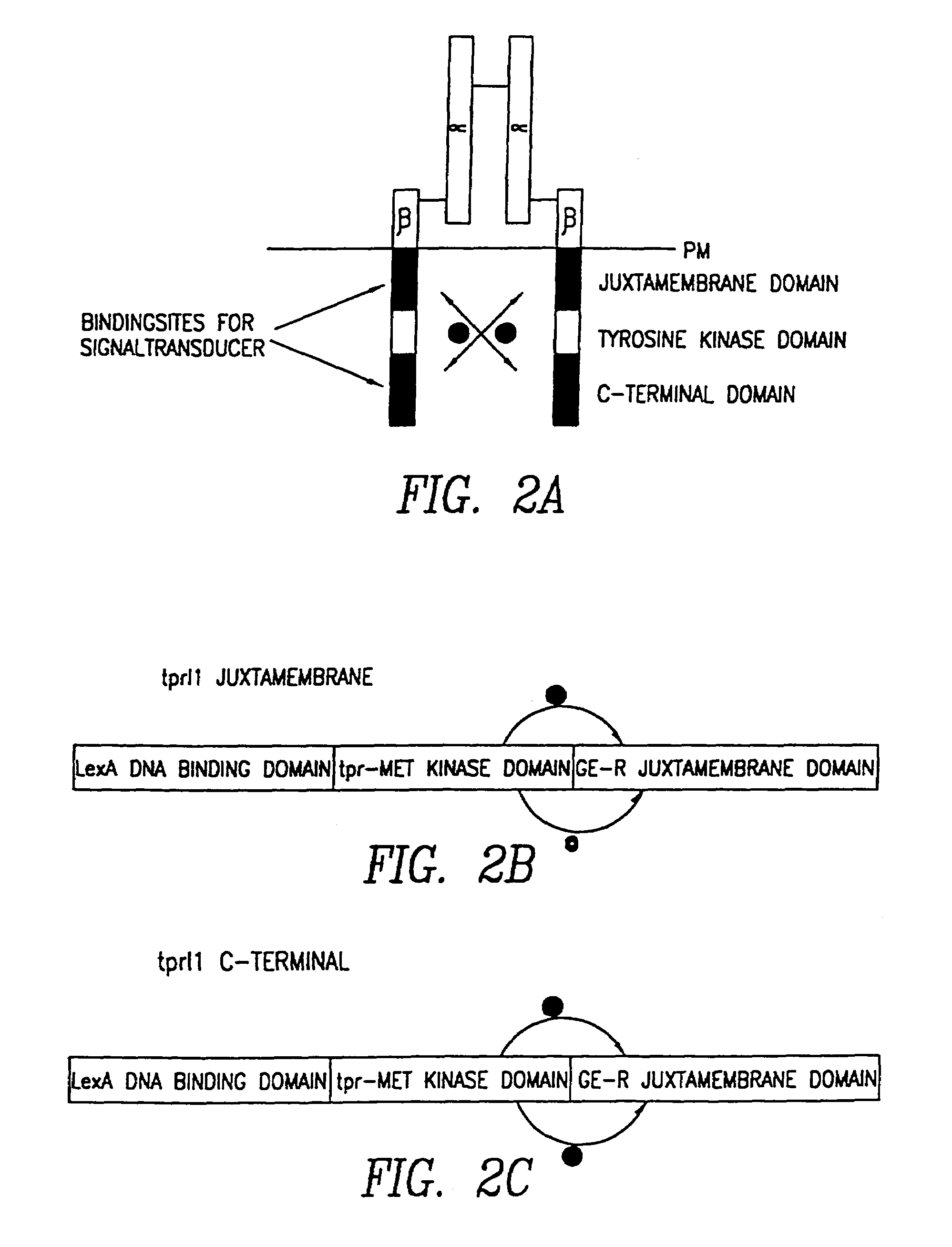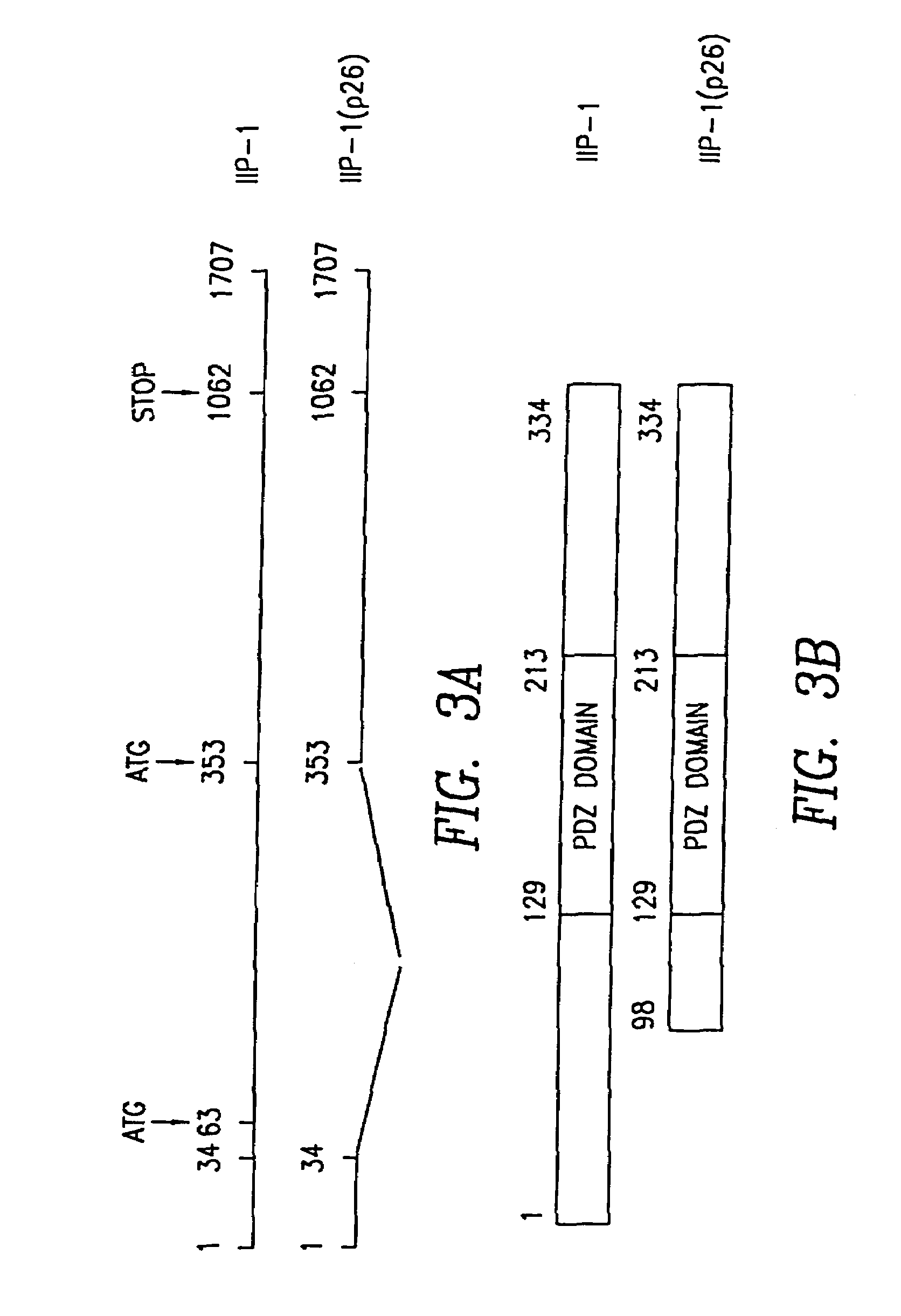Methods for detecting cancer cells by using nucleic acid encoding for IGF-1 receptor interacting proteins
- Summary
- Abstract
- Description
- Claims
- Application Information
AI Technical Summary
Benefits of technology
Problems solved by technology
Method used
Image
Examples
example 1
Isolation and Characterization of IGF-1R Binding Proteins
[0100]The yeast two-hybrid system (Fields, S., and Song, O., Nature 340 (1989) 245-246) was used to isolate unknown cytosolic IGF-1 receptor binding proteins. For screening a modified version of the yeast two-hybrid system was used which allows interchain tyrosylphosphorylation of the receptors in yeast.
[0101]The yeast two-hybrid bait plasmid (BTM116-cpIGF-1 receptor) was constructed by fusing the cytoplasmic domain of the β-subunit of the IGF-1 receptor (nt 2923 to 4154) (Ullrich, A., et al., EMBO J. 5 (1986) 2503-2512) to the LexA DNA-binding domain which forms dimers and mimics the situation of the activated wildtype receptor (cf. Weidner, M., et al., Nature 384 (1996) 173-176). By introducing a proline-glycine spacer between the LexA DNA-binding domain and the receptor domain the ability of the bait to bind known substrates of the IGF-1 receptor was remarkably increased in comparison to other spacer amino acids (FIG. 1).
[0...
example 2
Assay Systems:
A) In-Vitro / Biochemical Assays:
[0106]1 ELISA-Based Assay / Homogenous Assay
[0107]IGF-1R and the binding proteins (IIPs) are expressed with or without Tag-epitopes in E. coli or eucaryotic cells and purified to homogeneity. Interaction of IGF-1R and the respective binding proteins are analyzed in the presence or absence of drugs. Compounds which either inhibit or promote binding of IGF-1R and the respective binding proteins are selected. In the case of the ELISA system antibodies specific for the two binding partners are used for detection of the complexes. In the case of the homogenous assay at least one binding partner is labeled with fluorophores which allows analysis of the complexes. Alternatively, anti-Tag-antibodies are used to monitor interaction.
B) Cellular Assays:
[0108]Tumor cells or cells transfected with expression constructs of the IGF-1R and the respective binding proteins are treated with or without drugs and complex formation between the two components is ...
example 3
cDNA Cloning of IIP-1 and IIP-10 (and RT-PCR-Assay)
[0109]The nucleotide sequence of full length IIP-1 was determined by sequencing of the partial cDNA clones of IIP-1 and (IIP-1a, IIP-1b) and by using database information (ESTs). cDNA cloning of full length IIP-1 was performed by RT PCR on total RNA isolated from a MCF7ADRbreast cell line. PT PCR with two oligonucleotide primers: TIP2c-s (SEQ ID NO:7) and TIP2b-r (SEQ ID NO:8) resulted in amplification of two DNA fragments of 1.0 kb (IIP-1) and 0.7 kb (IIP-1(p26)).
[0110]The nucleotide sequence of full length IIP-10 was determined by sequencing of the partial cDNA clone of IIP-10 and by using database information (ESTs). cDNA cloning of IIP-10 was performed on total RNA isolated from the colon cancer cell line SW480. RT PCR with two oligonucleotide primers: Hcthy-s (SEQ ID NO:9) and Hcthy-r (SEQ ID NO:10) resulted in amplification of a cDNA fragment of 676bp (IIP-10).
[0111]DNA sequencing was performed using the dideoxynucleotide chai...
PUM
 Login to View More
Login to View More Abstract
Description
Claims
Application Information
 Login to View More
Login to View More - R&D
- Intellectual Property
- Life Sciences
- Materials
- Tech Scout
- Unparalleled Data Quality
- Higher Quality Content
- 60% Fewer Hallucinations
Browse by: Latest US Patents, China's latest patents, Technical Efficacy Thesaurus, Application Domain, Technology Topic, Popular Technical Reports.
© 2025 PatSnap. All rights reserved.Legal|Privacy policy|Modern Slavery Act Transparency Statement|Sitemap|About US| Contact US: help@patsnap.com



